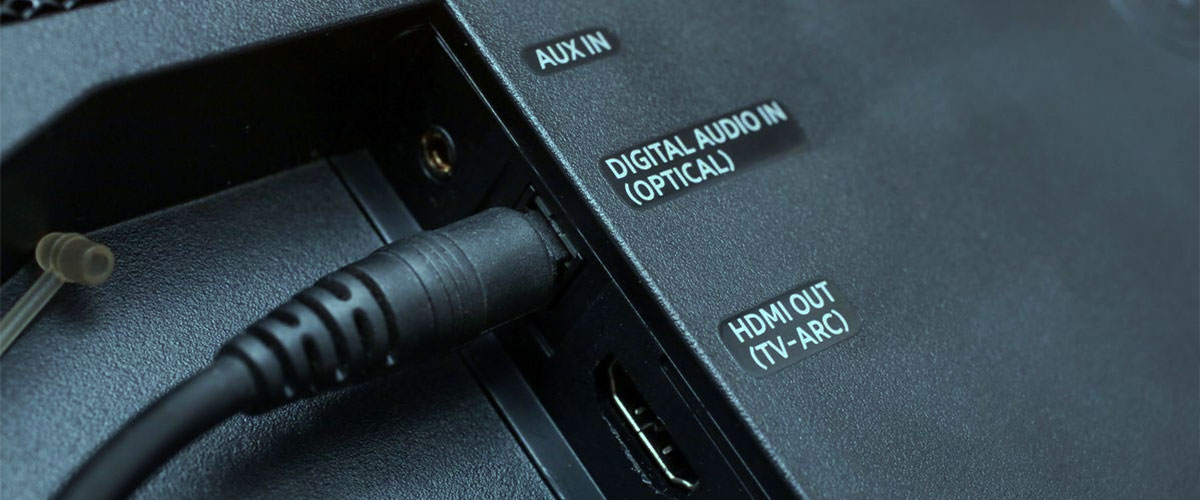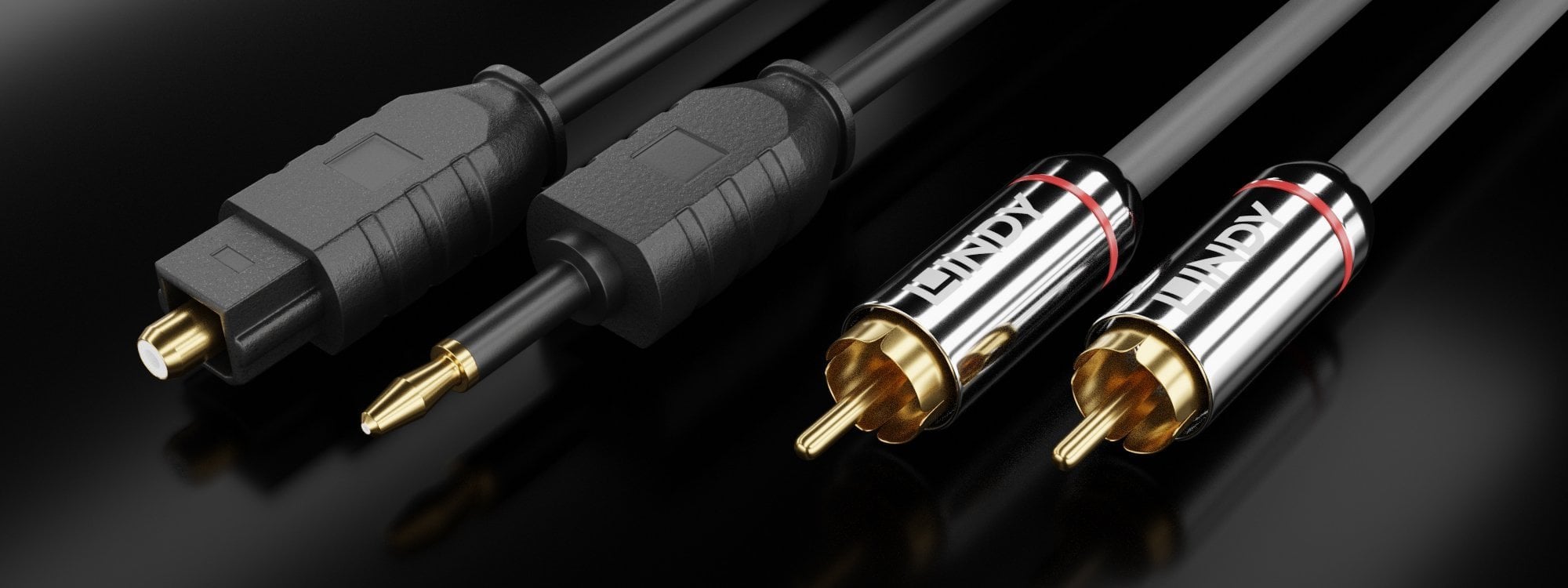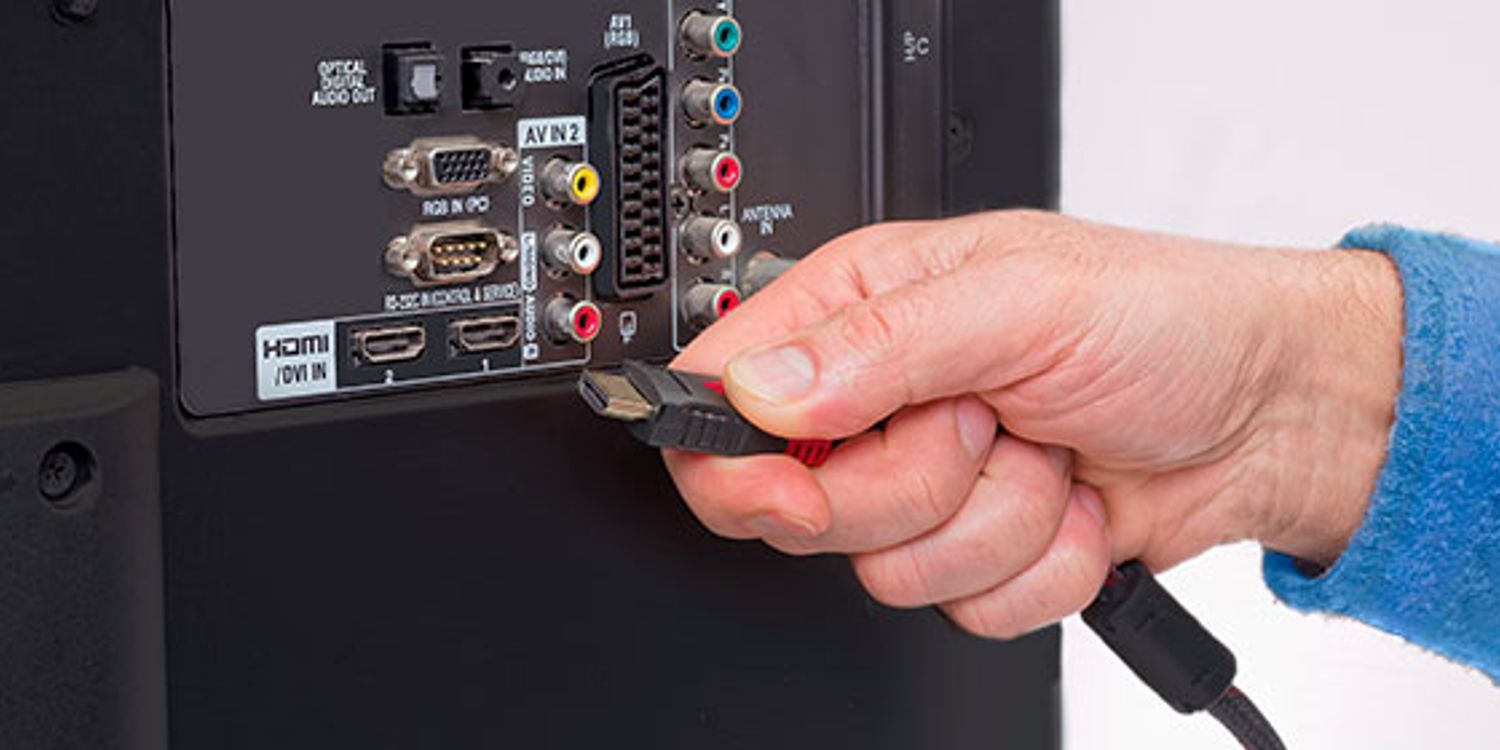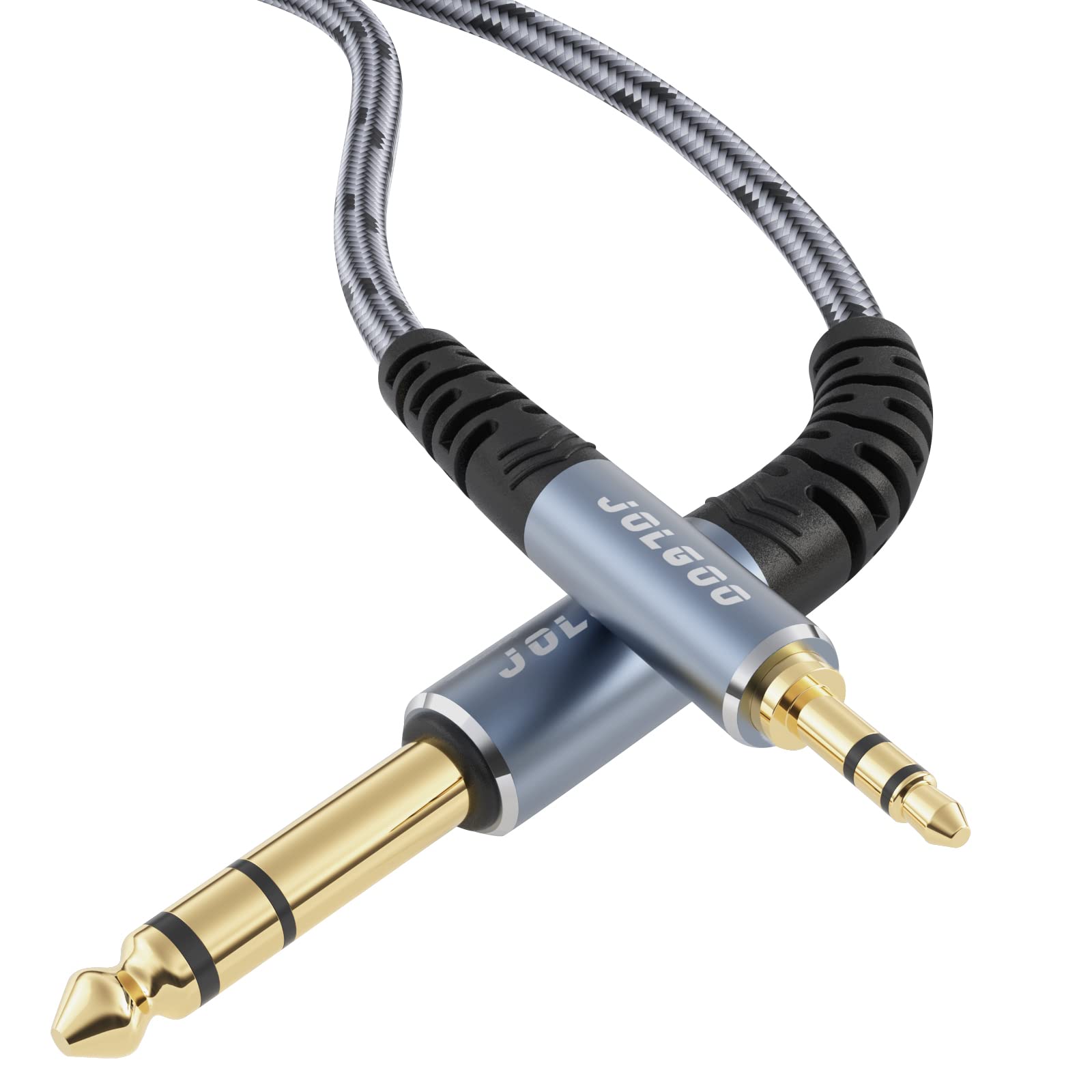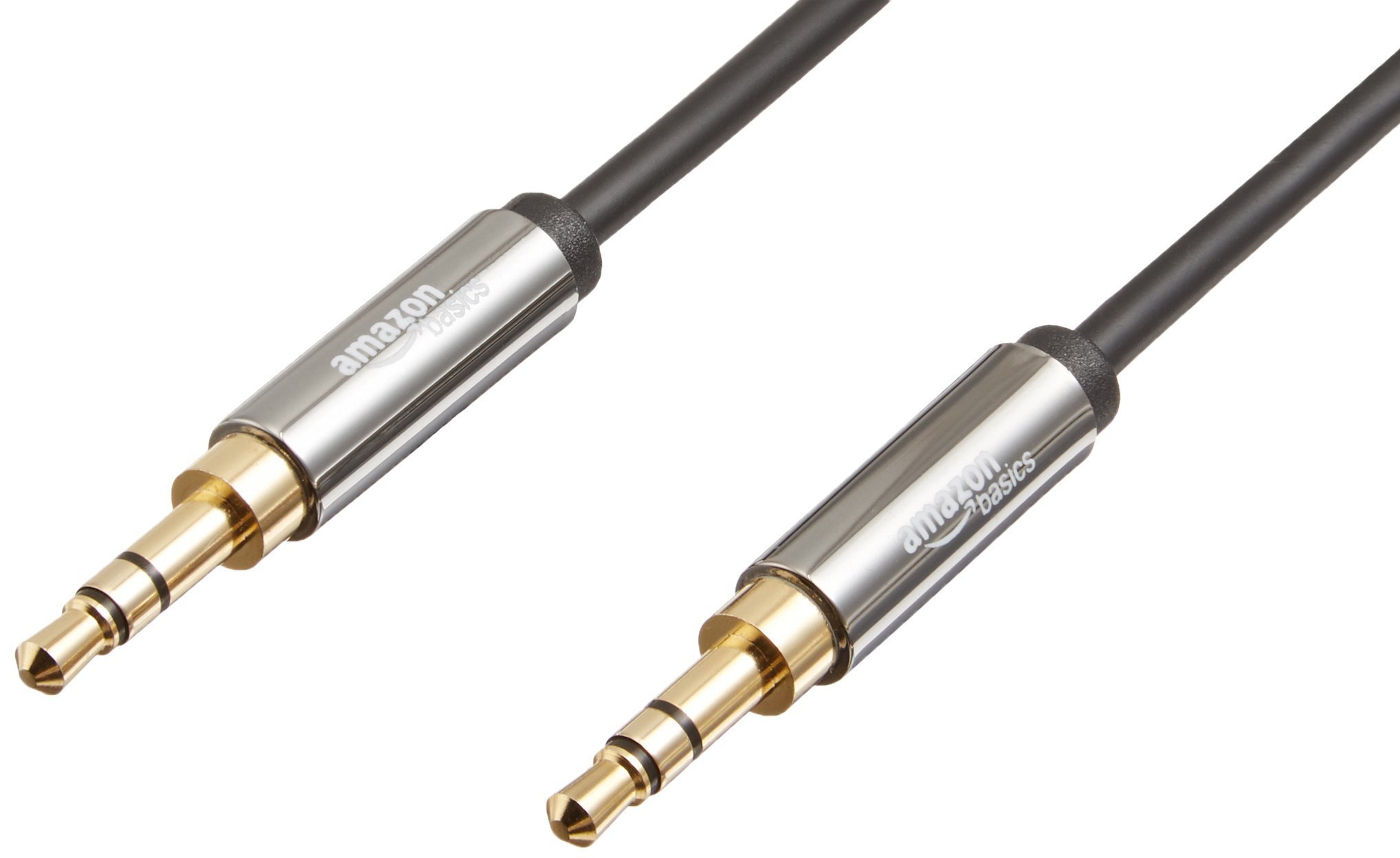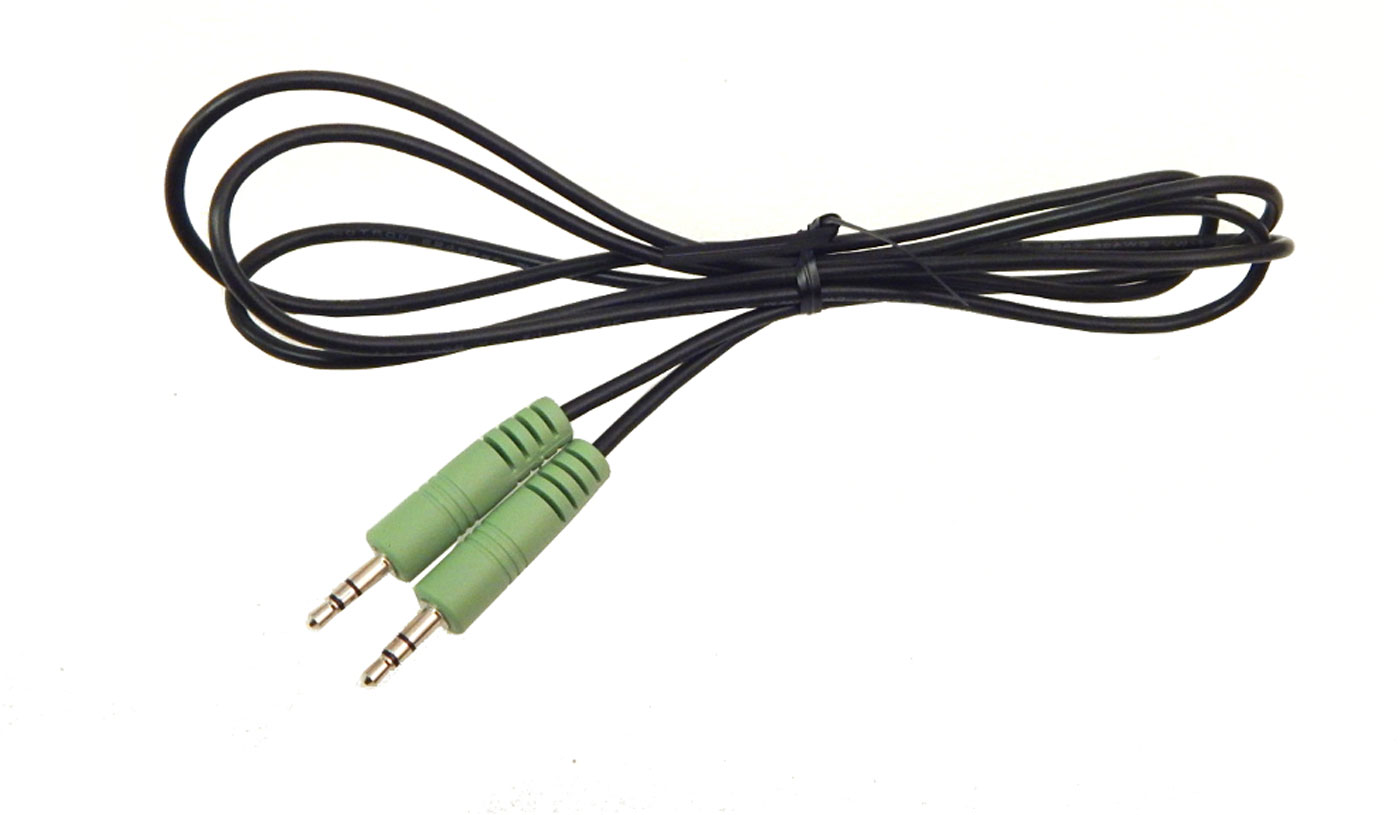Home>Production & Technology>Audio Cable>What Is A Digital Or Analog Audio Cable
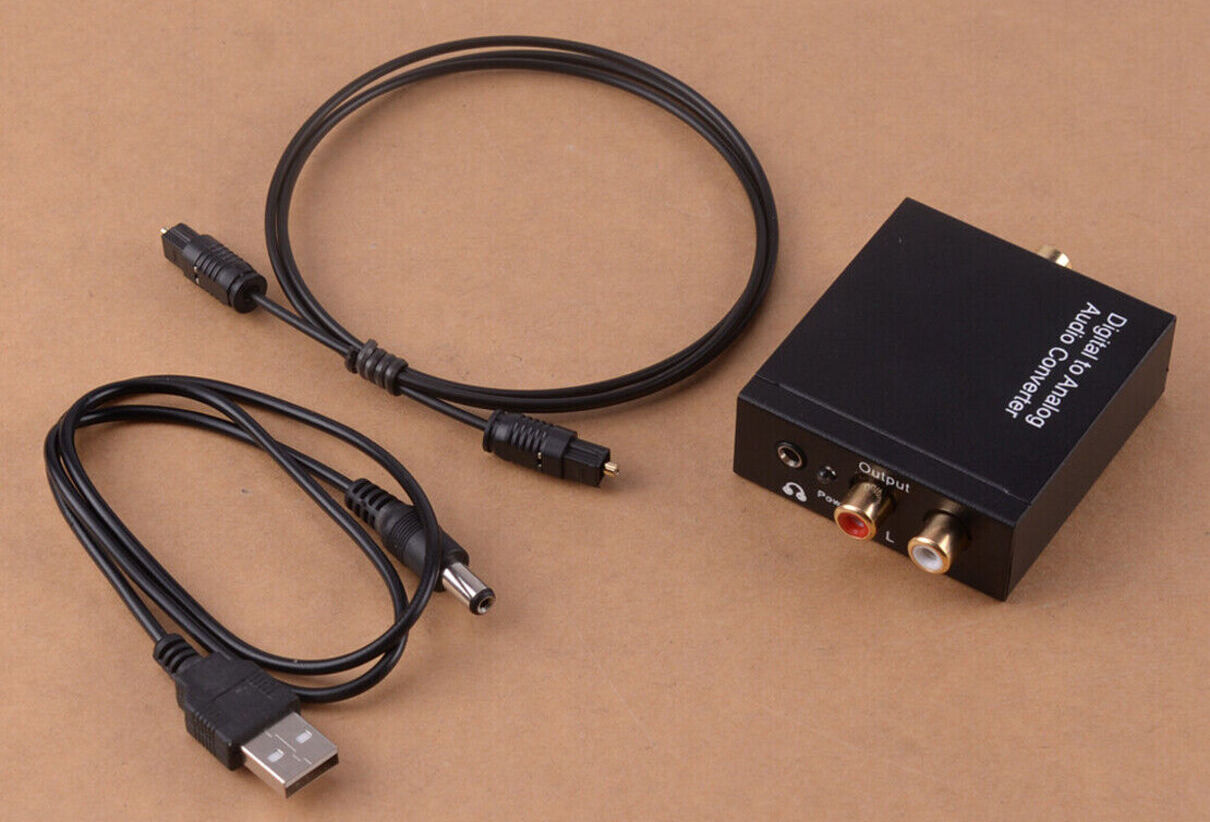

Audio Cable
What Is A Digital Or Analog Audio Cable
Modified: January 22, 2024
Discover the difference between digital and analog audio cables. Learn how they work and which one is right for your audio needs.
(Many of the links in this article redirect to a specific reviewed product. Your purchase of these products through affiliate links helps to generate commission for AudioLover.com, at no extra cost. Learn more)
Table of Contents
- Introduction
- Definition of Digital Audio Cable
- Definition of Analog Audio Cable
- Key Differences between Digital and Analog Audio Cables
- Importance of Choosing the Right Audio Cable
- Common Types of Digital Audio Cables
- Common Types of Analog Audio Cables
- Factors to Consider When Choosing an Audio Cable
- Proper Maintenance and Handling of Audio Cables
- Conclusion
Introduction
Welcome to the world of audio cables! Whether you’re a music enthusiast, a professional sound engineer, or someone who simply enjoys high-quality audio, understanding the different types of audio cables is essential. In this article, we will explore the fascinating realm of audio cables, specifically focusing on the differences between digital and analog audio cables.
Audio cables serve as the vital link between audio devices, transferring sound signals from one component to another. They play a crucial role in maintaining the integrity and fidelity of the audio signal, ensuring that you experience optimal sound quality.
There are two primary categories of audio cables: digital and analog. While they both serve the same purpose of transmitting audio signals, they function in distinct ways, each with its own set of advantages and considerations. By understanding the differences between these two types of cables, you can make informed decisions when it comes to choosing the right audio cable for your specific needs.
In the following sections, we will delve into the definitions of digital and analog audio cables, explore their key differences, highlight the importance of selecting the right cable, and discuss various types and factors to consider when choosing an audio cable. So, let’s dive in and explore the world of audio cables!
Definition of Digital Audio Cable
A digital audio cable is designed to transmit audio signals in a digital format. Unlike analog cables, which carry continuous electrical voltage signals that represent sound waves, digital cables transmit audio data as binary code composed of ones and zeros. This digital representation allows for more accurate and precise audio reproduction.
Digital audio cables use specific protocols and formats to ensure the accurate transmission of data. One common format is the S/PDIF (Sony/Philips Digital Interface) standard, which uses either coaxial or optical connections. Coaxial digital cables typically have RCA connectors and are capable of carrying both stereo and multi-channel audio signals, making them popular choices for connecting devices like home theater systems and audio interfaces. Optical digital cables, on the other hand, use the TOSLINK connector and transmit audio signals using light, resulting in interference-free transmission.
Another popular digital audio cable format is HDMI (High-Definition Multimedia Interface). Although primarily used for transmitting video signals, HDMI cables also support the transmission of high-quality digital audio. They are commonly found in home theater setups where audio and video signals need to be transmitted together.
Digital audio cables offer several advantages over analog cables. Firstly, they are less susceptible to interference, as the digital signals are immune to external electrical noise. This results in a cleaner and more accurate audio reproduction. Secondly, digital cables can carry more information, allowing for the transmission of high-quality audio formats like Dolby Digital and DTS. This is particularly important in home theater systems or professional audio setups where high-fidelity audio is desired.
It’s worth noting that digital audio cables can come in various shapes and sizes, including different connector types and lengths. It’s essential to ensure compatibility between your audio devices and the digital audio cable you choose. Additionally, while digital cables can offer superior audio quality, it’s crucial to consider the capabilities of your audio equipment, as not all devices utilize the full potential of digital audio signals.
In summary, digital audio cables are designed to transmit audio signals in a digital format, resulting in more accurate and interference-free audio reproduction. They come in various formats and connector types, each suited for different audio setups. Choosing the right digital audio cable can significantly enhance your audio experience and help you achieve the desired sound quality.
Definition of Analog Audio Cable
An analog audio cable is a type of cable that carries audio signals in an analog format. Unlike digital cables that transmit audio information as binary data, analog cables carry continuous electrical voltage signals that directly represent sound waves. These signals are converted into audible sound by the audio equipment.
Analog audio cables utilize various connectors and cables, depending on the audio devices and applications. One of the most common types is the RCA cable, which features a pair of connectors typically color-coded red and white. These cables are commonly used to connect devices like CD players, turntables, and amplifiers, supporting stereo audio signals.
Another popular analog audio cable is the 3.5mm stereo audio cable, also known as the aux cable or headphone jack cable. This cable is widely used to connect smartphones, tablets, laptops, and other portable audio devices to speakers or headphones, providing a convenient way to enjoy personal audio on the go.
Analog audio cables have been in use for decades and have proven to be reliable in various audio setups. They are often preferred for their simplicity, compatibility, and ease of use. Analog cables are also versatile, allowing users to connect a wide range of audio devices regardless of the brand or model.
While analog audio cables do have their advantages, they are more susceptible to interference and signal degradation compared to digital cables. Factors such as cable length, quality, and electrical noise can impact the audio signal quality. However, with proper care and high-quality cables, the difference in audio quality may not be noticeable for casual listeners.
It’s important to note that some audio equipment may have both analog and digital audio connectors, providing users with the flexibility to choose the appropriate cable based on their specific needs or the capabilities of the audio devices being used.
In summary, analog audio cables transmit audio signals in an analog format, utilizing continuous electrical voltage to represent sound waves. They are widely used and compatible with various audio devices. While analog cables may be more susceptible to interference, they remain a practical and versatile option for many audio applications.
Key Differences between Digital and Analog Audio Cables
While both digital and analog audio cables serve the purpose of transmitting audio signals, they differ significantly in terms of how they transmit and process the audio information. Understanding the key differences between these two types of cables is crucial for choosing the right cable for your specific audio needs. Here are the main distinctions:
- Signal Representation: The primary difference between digital and analog audio cables lies in how they represent the audio signal. Analog cables transmit sound as continuous electrical voltage signals that directly resemble the original sound wave. On the other hand, digital cables convert the audio signal into binary code consisting of ones and zeros, representing a digital representation of the audio data.
- Interference and Signal Quality: Digital audio cables are less susceptible to interference compared to analog cables. The digital signal is immune to external electrical noise, resulting in cleaner and more accurate audio reproduction. Analog cables, however, are more prone to interference from factors like electromagnetic interference and cable length, which can degrade the audio signal quality.
- Audio Fidelity: Digital audio cables have the potential to deliver higher audio fidelity compared to analog cables. Digital signals can carry high-quality audio formats like Dolby Digital and DTS, providing a more immersive and realistic audio experience. Analog cables, while capable of delivering good audio quality, may not match the level of fidelity offered by digital cables.
- Compatibility: Analog audio cables are highly compatible with a wide range of audio devices, as they have been in use for many years. They can connect various devices, regardless of brand or model, utilizing commonly found connectors like RCA or 3.5mm. Digital audio cables, however, may require specific connectors and formats, making them less universally compatible.
- Applications: Digital audio cables are commonly used in setups that require high-quality audio, such as home theater systems or professional audio environments. They excel in transmitting multi-channel audio signals and are often found in devices like surround sound systems, AV receivers, or digital audio workstations. Analog audio cables are versatile and can be used in various applications, from connecting musical instruments to stereo systems, to plugging in headphones or portable audio devices.
Considering these key differences, it is important to choose the right type of audio cable based on your specific requirements and audio equipment. While digital cables offer superior audio fidelity and are ideal for certain setups, analog cables remain a practical and compatible choice for many audio applications.
Importance of Choosing the Right Audio Cable
Choosing the right audio cable for your audio system is essential to ensure optimal sound quality and performance. The quality of the audio cable directly impacts the integrity of the audio signal being transmitted, determining how faithfully the sound is reproduced. Here are the key reasons why selecting the right audio cable is crucial:
- Preserving Audio Integrity: The audio cable acts as a conduit for the audio signal, carrying it from the source to the destination device. Using a high-quality cable that is suited for your specific audio setup helps to preserve the integrity of the audio signal, minimizing signal loss, distortion, and interference. This results in a cleaner, more accurate sound reproduction.
- Optimizing Sound Quality: Different types of audio cables have varying capabilities when it comes to handling and transmitting audio signals. For example, digital audio cables can handle high-resolution audio formats, providing superior sound fidelity. By selecting the right cable, you can optimize the sound quality of your audio system, ensuring that you are getting the best audio experience possible.
- Minimizing Interference: Electrical interference, such as electromagnetic interference or radio frequency interference, can degrade the audio signal, introducing noise and distortion. Choosing cables with proper shielding and insulation helps minimize this interference, resulting in cleaner and clearer sound reproduction.
- Compatibility and Connectivity: Each audio device may have different input and output ports, requiring specific cable connectors for proper connectivity. Using the right cable ensures compatibility between your audio devices, allowing for seamless and hassle-free connections. This is particularly important when connecting diverse audio equipment, such as mixing consoles, amplifiers, speakers, or headphones.
- Durability and Longevity: Choosing high-quality audio cables with robust construction and reliable connectors enhances their durability and longevity. Well-built cables are less prone to damage, such as fraying or breaking, which can cause signal loss or intermittent connectivity issues. By investing in durable cables, you can enjoy uninterrupted audio performance for an extended period.
Whether you are a music lover, audio professional, or casual listener, investing in the right audio cables is essential to ensure that you experience the full potential of your audio system. By choosing cables that are suited for your specific needs, you can achieve optimal sound quality, minimize signal loss and interference, and enjoy a truly immersive audio experience.
Common Types of Digital Audio Cables
There are several types of digital audio cables available, each designed to meet specific needs and requirements for transmitting digital audio signals. Here are some commonly used digital audio cables:
- Coaxial Digital Cable: Coaxial digital cables utilize copper conductor wires and are often designed with RCA connectors. They are commonly used to transmit audio signals in stereo or multi-channel formats. Coaxial digital cables support various protocols, such as S/PDIF (Sony/Philips Digital Interface), and are widely used in home theater setups and audio interfaces.
- Optical Digital Cable: Optical digital cables, also known as TOSLINK cables, use light to transmit digital audio signals. They are comprised of a fiber optic core and connectors with a TOSLINK interface. Optical cables offer interference-free transmission, making them ideal for setups where electrical interference is a concern. They are commonly used in home theater systems, soundbars, and gaming consoles.
- HDMI Cable: Although primarily used for transmitting video signals, HDMI (High-Definition Multimedia Interface) cables also support digital audio transmission. HDMI cables can carry both high-definition video and high-quality audio signals. They are commonly used in home theater setups to connect devices like Blu-ray players, AV receivers, and gaming consoles.
- USB Cable: USB (Universal Serial Bus) cables are not specifically designed for audio, but they can transmit digital audio signals as well. USB cables are commonly used for connecting various audio devices like headphones, speakers, and audio interfaces to computers or mobile devices. USB cables support different protocols, such as USB Audio Class, allowing for high-quality audio transmission.
- Ethernet Cable: Ethernet cables are primarily used for internet connectivity, but they can also be used for audio transmission in certain setups. Ethernet cables, commonly using the RJ-45 connector, are used to connect audio devices that support network audio streaming, such as network players or audio receivers.
These are just some of the commonly used digital audio cables. It’s important to select the cable that is compatible with your audio devices and supports the necessary protocols for transmitting the desired audio format. Always ensure that the cable you choose matches the connectors on your audio equipment and is capable of handling the required data transfer rate for optimal performance.
Common Types of Analog Audio Cables
Analog audio cables come in various types and connectors, each serving different audio connectivity needs. Here are some commonly used types of analog audio cables:
- RCA Cable: RCA cables, also known as phono cables, are one of the most widely used analog audio cables. They feature RCA connectors, typically color-coded red and white, and are commonly used to connect audio devices like CD players, turntables, amplifiers, and home theater systems. RCA cables are ideal for stereo audio transmission.
- 3.5mm Stereo Audio Cable: The 3.5mm stereo audio cable, also called the aux cable or headphone jack cable, is a popular analog audio cable used to connect portable audio devices like smartphones, tablets, and laptops to speakers, headphones, or car audio systems. The cable features a 3.5mm (1/8″) male connector on both ends.
- XLR Cable: XLR cables are commonly used in professional audio setups. They feature XLR connectors, which are three-pin connectors with a locking mechanism. XLR cables are known for their balanced audio signal transmission, making them ideal for microphones, studio monitors, and audio interfaces.
- TS and TRS Cables: TS (Tip-Sleeve) and TRS (Tip-Ring-Sleeve) cables are audio cables commonly used for mono and stereo audio connections, respectively. TS cables feature a single conductor and are often used for instruments like electric guitars or keyboards. TRS cables have an extra ring conductor and are used for stereo audio signals or balanced audio connections.
- S/PDIF Cable: S/PDIF (Sony/Philips Digital Interface) cables are primarily digital audio cables, but they can also be used for analog audio transmission. S/PDIF cables use either coaxial or optical connectors and are commonly used to connect audio devices like DVD players, sound cards, or digital audio interfaces.
These are just a few examples of the commonly used analog audio cables. It’s important to choose the appropriate cable that matches the connectors on your audio equipment and suits your specific audio needs. Consider factors such as the type of audio signal (stereo, mono, or balanced), the distance of the audio transmission, and the quality of the cable to ensure optimal audio performance.
Factors to Consider When Choosing an Audio Cable
When selecting an audio cable for your audio setup, several factors should be taken into consideration to ensure compatibility, optimal performance, and the best audio experience. Here are some key factors to keep in mind:
- Audio Source and Destination: Consider the audio devices you are connecting and their corresponding input and output ports. Ensure that the cable connectors are compatible with your audio equipment. For example, if you are connecting a smartphone to a speaker, a 3.5mm aux cable may be suitable, while a digital audio cable may be needed for connecting a Blu-ray player to a home theater system.
- Cable Length: Determine the required cable length based on the distance between the audio source and destination. Avoid using excessively long cables, as they can introduce signal loss and interference. Conversely, using short cables when needed helps minimize cable clutter and potential signal degradation.
- Cable Quality and Construction: Choose high-quality cables made with durable materials and reliable connectors to minimize signal loss and ensure longevity. Look for cables with proper shielding and insulation to minimize interference from external electrical sources.
- Audio Fidelity: Consider the audio quality you desire and select cables that support the desired audio formats and resolutions. For example, if you wish to transmit high-resolution audio, ensure that the cable can handle the required bandwidth and support formats like Dolby Atmos or DTS:X.
- Usage and Environment: Consider where and how the cable will be used. If the cable needs to withstand frequent movement or harsh environmental conditions, choose cables with reinforced connectors and durable outer jackets. Additionally, consider factors like flexibility, tangle resistance, and color-coding for easy identification and management.
- Budget: Set a budget for your audio cable purchase. While it’s important to invest in quality cables, you don’t necessarily need to break the bank. Assess your needs and strike a balance between cost and performance to find the best value for your money.
By considering these factors, you can select the appropriate audio cable that matches your audio equipment, delivers optimal performance, and ensures a seamless and high-quality audio experience.
Proper Maintenance and Handling of Audio Cables
Proper maintenance and handling of audio cables are essential to ensure their longevity, optimal performance, and uninterrupted audio transmission. Here are some tips to help you take care of your audio cables:
- Avoid Excessive Bending and Tugging: Excessive bending or tugging of cables can cause stress on the internal wires and connectors, leading to signal loss or damage. Handle cables with care and avoid bending them at sharp angles.
- Secure Connections: Ensure that cable connections are secure and tight. Loose connections can lead to signal loss or intermittent audio interruptions. Periodically check and tighten the connectors to maintain a stable connection.
- Minimize Cable Stress: Avoid placing heavy objects on top of cables or pinching them under furniture or sharp edges. Stress on the cables can cause damage to the internal wiring and negatively impact the audio signal quality.
- Avoid Pulling Cables by the Cord: When disconnecting cables, gently pull on the connector itself rather than the cord. Pulling on the cord can strain the connection and damage the cable’s internal components.
- Cable Organization: Properly organize and manage your cables to prevent tangling and unnecessary strain. Use cable ties, clips, or cable management solutions to keep them neat and untangled.
- Protect from Environmental Factors: Keep audio cables away from extreme heat, direct sunlight, moisture, or liquids. Exposure to harsh environmental conditions can damage the cable’s insulation and affect its performance.
- Regular Cleaning: Dust and debris can accumulate on cable connectors, affecting the signal quality. Periodically clean cables and connectors using a soft, dry cloth or compressed air to remove any dirt or dust particles.
- Proper Storage: When not in use, coil the cable loosely and avoid tightly winding it, as this can cause kinks and damage. Store the cables in a cool and dry place, away from potential physical damage or excessive temperature fluctuations.
- Repair or Replace Damaged Cables: If you notice any signs of fraying, loose connections, or other physical damage, promptly repair or replace the damaged cable. Continuing to use a damaged cable can lead to further issues and compromise audio quality.
By following these maintenance and handling practices, you can ensure that your audio cables remain in optimal condition, deliver high-quality audio signals, and have a longer lifespan.
Conclusion
Choosing the right audio cable is essential for a seamless and immersive audio experience. Whether you’re connecting your home theater system, studio equipment, or portable audio devices, understanding the differences between digital and analog audio cables and considering factors like compatibility, signal quality, and durability is crucial.
Digital audio cables, such as coaxial, optical, HDMI, and USB, offer advantages like high-quality audio transmission, immunity to interference, and support for advanced audio formats. Analog audio cables, like RCA, 3.5mm, XLR, and TS/TRS cables, remain versatile and widely compatible options for various audio setups.
Maintaining and handling your audio cables properly is equally important. By avoiding cable stress, securing connections, and practicing regular cleaning and organization, you can extend the lifespan and maintain the optimal performance of your cables.
Remember to consider factors like audio source and destination, cable length, quality and construction, audio fidelity, usage environment, and budget when selecting audio cables. By making informed choices, you can achieve optimal sound quality, minimize signal loss, and enjoy an enhanced audio experience.
Whether you’re a music enthusiast, audio professional, or casual listener, the right audio cable can make a significant difference in your audio setup. So, take the time to explore and select the appropriate audio cable for your needs, and immerse yourself in the world of exceptional sound!

